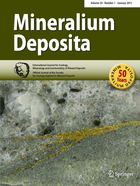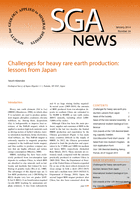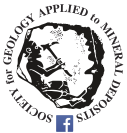 The SGA Student Chapter Prague organized one of its field trips to visit sedimentary iron mineralization in the Paleozoic volcanosedimentary sequences of the Prague Basin (Barrandian) in central Europe.
The SGA Student Chapter Prague organized one of its field trips to visit sedimentary iron mineralization in the Paleozoic volcanosedimentary sequences of the Prague Basin (Barrandian) in central Europe.
The Barrandian is a classical area of Neoproterozoic to Devonian volcanosedimentary strata, affected by the Variscan orogeny. In the Middle Cambrian through Ordovician, the deposition of predominantly shallow marine conglomerates, graywackes, mudrocks and shales was accompanied by intermittent volcanic activity of calc-alkaline basalts, andesites, rhyolites and their subaqueous pyroclast ic products. Several of these volcanic centers were source of energy and chemical components for the formation of perivolcanic or hanging-wall iron-oxide mineralization. The formation of ironstones continued to stratigraphic hanging wall as well as more distal sedimentary settings, and gradually evolved into oolitic iron deposits, which occur as several horizons In the Ordovician siliciclastics. The deposition of these siderite-, chamosite- or hematite-bearing oolitic iron ores coincides with their worldwide formation on shallow marine continental shelves at this time interval. Ironstones in the Barrandian represent classical and previously economic accumulations, which were exploited from prehistoric times until 1960’s. The field stops offered a rich opportunity to compare volcanic and epiclastic products and several mineralization styles, which recorded different influences of volcanic activity, hydrothermal and subaquatic alteration and redox gradients during iron precipitation and diagenesis.
ic products. Several of these volcanic centers were source of energy and chemical components for the formation of perivolcanic or hanging-wall iron-oxide mineralization. The formation of ironstones continued to stratigraphic hanging wall as well as more distal sedimentary settings, and gradually evolved into oolitic iron deposits, which occur as several horizons In the Ordovician siliciclastics. The deposition of these siderite-, chamosite- or hematite-bearing oolitic iron ores coincides with their worldwide formation on shallow marine continental shelves at this time interval. Ironstones in the Barrandian represent classical and previously economic accumulations, which were exploited from prehistoric times until 1960’s. The field stops offered a rich opportunity to compare volcanic and epiclastic products and several mineralization styles, which recorded different influences of volcanic activity, hydrothermal and subaquatic alteration and redox gradients during iron precipitation and diagenesis.







